Best 12 Inch Cordless Miter Saw
Best Cordless 12 Inch Miter Saw Head To Head
For this installment of our BestCordless Miter Saw Head-to-Head series, we took a look at four 12-inch cordless miter saws. If this is your first time reading one of our Head to Heads, trust that our crew poured over each saw to give you a comprehensive look at these tools. Furthermore, we provide our readers with insights you can only expect from seasoned pros, arming you with all the information you need before investing in a miter saw.
Full-sized miter saws are not for everyone, they shine when cutting framing lumber, large crown moldings, fascia and soffit trim, stair trim, and any cuts in larger thickness and width materials.
Best 12 Inch Cordless Miter Saw Evaluation Format
Our team has put some serious time and effort into this evaluation to bring you the most comprehensive information available. For this Head to Head, we broke things into several categories including Precision & Accuracy, Performance (speed/power), Features, Ergonomics, Dust Collection, Decibels, and Price. For each of these categories, we’ll rank the saws and in the end, we’ll name the Best 12″ Cordless Miter Saw based on all the results combined.
- Precision, and Accuracy – In this category, we evaluated the accuracy of the miter saws, out of the box, and how easy it is to make adjustments.
- Performance [Power / Speed Test] -We looked at cutting speed as an indicator of saw motor performance.
- Run-time – Lots of pros think run-time is important. The performance evaluation took a very deep dive into the power of the saw motors and how well the saws managed repetitive cutting of framing lumber.
- Features – An overall comparison of features and specifications.
- Ergonomics – Ergonomics are really important to users and an important category to consider when purchasing any power tool. In addition to traditional ergonomics, we also included functionality in this category.
- Dust Collection – Construction is a messy business and dust is one of the biggest evils in our industry.
- Decibels – We evaluated the sound level in decibels
- Price – Price is always an important factor in determining which saw is best for a user. We’ve included the current pricing found online for each of the saws “as-tested,” at the time of publication.
Best 12 Inch Cordless Miter Saw Specifications
Before we present the Best 12 Inch Cordless Miter Saw testing results, it’s helpful to set the stage by listing all the features and specifications for comparison. Specific differences in the saws are listed below.
Bosch GCM18V-12GDC Surgeon Glide
** Brand new saw, coming to the market soon but not available yet
- Blade 12-inch
- RPM 2,550-4,000
- Weight 59.3 lbs.
- Max Cuts Angle 47 L, 47 R
- Max Bevel Cuts 47 R 47 L
- Vertical Capacity 0° / 45°: 3 1/2″/ 2″
- Crosscut Capacity 0° / 45°: 13 1/2″ / 9-1/2″
- Laser Cut Line on Both Sides of Blade
- Battery Voltage: 18 Volt
- Battery Capacity: 1
DEWALT DHS7900AT2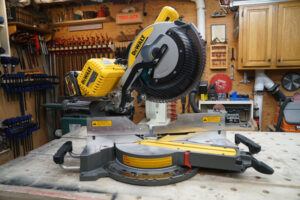
- Blade 12-inch
- RPM 3800
- Weight 56 lbs.
- Max Cuts Angle 0-50 L, 0-60 R
- Max Bevel Cuts 0-49 L/R
- Vertical Capacity 6-3/4″
- Crosscut Capacity 16″
- Light Cut Line
- Battery Voltage: 60 Volt
- Battery Capacity: 2
Makita XSL08PT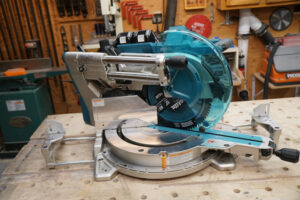
- Blade 12-inch
- RPM 4400
- Weight 69.1 lbs.
- Max Cuts Angle 0-60 L/R
- Max Bevel Cuts 0-48 L/R
- Vertical Capacity 6-3/4″
- Crosscut Capacity 15″
- Light Cut Line
- Battery Voltage: 36 Volt
- Battery Capacity: 2
Milwaukee 2739-21HD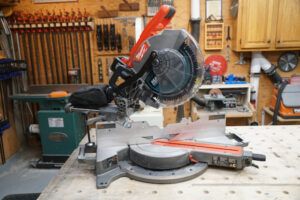
- Blade 12-inch
- RPM 3500
- Weight 47.6 lbs.
- Max Cuts Angle 0-50 L / 0-60 R
- Max Bevel Cuts 0-48 L/R
- Vertical Capacity 6-3/4″
- Crosscut Capacity 15″
- Light Cut Line
- Battery Voltage: 18 Volt
- Battery Capacity: 1
12″ Miter Saw Precision and Accuracy
To be consistent all three saws were equipped with a Makita 80-tooth, 12-inch blade. The only exception was the Bosch saw due to the fact that this was a prototype from Germany and the arbor size was 30 mm. The Tool Box Buzz crew was excited to be the FIRST to see this NEW Bosch saw.
Miter saws NEVER come from the factory perfectly tuned, but many users pull them out of the box and go to work with them. Not to mention a Pro saw gets dragged in and out of a truck or van which is a much harsher environment than a workshop saw.
For a finish carpenter, or woodworker a miter saws’ ability to make an accurate cut must be routinely checked and maintained because a little misalignment can cause compounding errors on a project.
We checked the calibration of the saws out of the box, recorded our findings, and then calibrated the saws, noting the level of difficulty to get them tuned up. Miter saw calibration is a critical step because a difference as small as 1° over a 1-in. span will result in a 1/64-in. the gap in a finished miter joint. Similarly, 3° over 5-in. span gives you a 9/32-in. gap.
The TBB crew wanted to give our readers an idea of how well the saws scored on accuracy right out of the box. We looked at the following areas:
- Table flatness
- Fence flatness
- Bevel accuracy when set to 0 degrees
- Miter accuracy when set to 45 degrees.
- Crosscut accuracy when set to 90 degrees
Table Flatness – For table flatness, we used a Bridge City Tool Works 24 inch stainless steel flat edge. We placed the flat edge onto the table and first looked for any light that could shine between the table surface and the stainless flat edge. Where the light shone through, we took a set of machinist feeler gauges and determined the size of the gap under the flat edge. We recorded the data and proceeded to check the fence accuracy. We turned the Bridge City flat edge and held it up to the lower part of each saws’ fence. Some of the saws have a single piece lower fence and others have a two-part lower fence. We measured any gap between the fence and the flat edge and noted the maximum reading from the feeler gauges.
0-Degree Bevel – For 90-degree bevel accuracy, we adjusted the saws to contact the factory setting for a 90-degree vertical cut. Then we used a Wixey digital gauge to measure the degrees between the table of the saw and the body of the blade. The Wixey gauge can be set to zero out any inclination in the saw. This enables the user to read the accurate relative difference in inclination between the table and the blade. We zeroed out the gauge each time we took a reading.
45-Degree Miter – Cutting 45-degree miters is a critical function of these types of miter saws. We measured the factory 45-degree cuts by setting the saw to its 45-degree setting. We made a cut into 2×4 lumber and read the actual cut with a digital T-Bevel gauge. For each cut, we zeroed the gauge. Then we took the reading and recorded the data. This type of gauge is accurate to one-tenth of a degree.
90-Degree Cross Cut – For this test, we set the saw to the factory 90-degree setting for a cross-cut. We crosscut a piece of plywood that had one edge squared with a track saw. We took the ‘cut-off’ piece and flipped it 180 degrees along the long axis. We lined up the two pieces against a straight edge and noted if there were a gap between the two halves along the cut edge. If we saw a gap, we measured this gap with feeler gauges. By flipping one of the pieces 180 degrees, this meant that any deviation from a 90-degree cut would show twice the error than just measuring one side by itself.
12-Inch Miter Saw Accuracy Results – Winner Makita
| Accuracy/ Precision | Cross- Cut | 45 Deg Miter | Bevel | Table and Fence | Totals | Rank |
| Makita | 2 | 2 | 3 | 1 | 8 | 1 |
| DEWALT | 1 | 1 | 4 | 3 | 9 | 2 |
| Bosch | 3 | 3 | 2 | 2 | 10 | 3 |
| Milwaukee | 2 | 4 | 1 | 4 | 11 | 4 |
Makita and DEWALT had excellent accuracy and were neck and neck here with 8 and 9 points respectively. Bosch followed in third place followed by Milwaukee in fourth. All of these saws were easy to tune-up if needed.
Best 12 Inch Cordless Miter Saw – Performance
For the performance section, we tested the run-time and speed of cut with the battery sold with the saw in the kitted form.
The Power Test is a good indication of what saw and blade configuration can cut. We made five timed cuts in 7-1/4″ LVL lumber and recorded the average time.
Finally, we conducted a speed test to quantify the power each saw displayed on a challenging piece of engineered lumber. This is a simple test with some uncontrolled variables, but our methods were fair.
We had the same operator conduct each cut, with the instruction to let the saw do the cutting, apply as much pressure as the saw and blade would allow. We waited for the blade to come to a complete stop, indexed the material, and then started a fresh cut. Time was started from the time the blade hit the wood till it exited out the back of the LVL and completed the cut. We timed 5 cuts per saw and took the average time.
Performance Winner – Makita
| LVL Speed Test | Seconds (Average) | Rank |
| Makita | 1.4 | 1 |
| Milwaukee | 2.2 | 2 |
| DEWALT | 2.5 | 3 |
| Bosch | 2.7 | 4 |
The Makita miter saw was the fastest cutting saw at an average of 1.4 seconds. The Milwaukee was 2.2 seconds and DEWALT was 2.5 seconds.
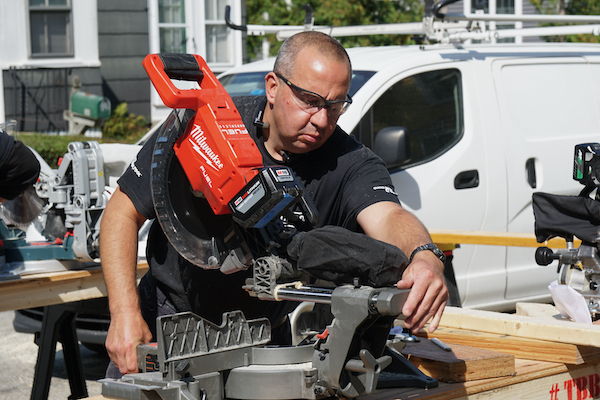
Run-time Test – Winner Bosch
For the run-time test, we made repetitive cuts in KD lumber until the battery was exhausted or thermal overload prevented further cutting. Operators were instructed to start the saw and bring it up to speed. Bring the saw forward, make the cut, wait for the blade to stop, reset, and repeat.
For this test the data is being presented in two ways; first with the total raw number of cuts, and secondly with the number of cuts normalized by using total battery pack energy (watt-hours), to give a more apples-to-apples comparison that acknowledges the different voltages and amp-hour pack sizes. The Milwaukee and Bosch saws run at 18-volts, the DEWALT used a 60-volt (54-volt working voltage) FlexVolt battery, Makita uses two 18-volt batteries running at 36 volts.
| Run-time Test | # Cuts | Rank |
| DEWALT | 191 | 1 |
| Bosch | 146 | 2 |
| Makita | 134 | 3 |
| Milwaukee | 105 | 4 |
For the total raw number of cuts, DEWALT led the way with 191 total cuts. Bosch followed with 146 cuts in second, Makita with 134 cuts in third, and Milwaukee ended with only 105 cuts in fourth. It should be noted that Milwaukee experienced quite a few thermal protective shut-downs. After the second one (at 105 cuts) we deemed it was finished. However, we kept cutting (each time it shutdown we reset the saw) for a total of 296 cuts before the battery pack was depleted.
Clearly, Milwaukee is being very conservative on protecting the tool from heat (that’s great to protect your investment, we think maybe a little too conservative as it really kills production if you have to grab another battery even though the pack still has a ton of energy left in it.
Run-time Normalization by Watt-Hours
Each of these saws came with a different sized “energy power plant” or battery configuration. As you can imagine, the saw with the greatest watt-hours battery theoretically has a leg up on its competition for run-time cuts. Whenever we do a cordless tool comparison, we level the playing field by taking the results and dividing the results by the number of watt-hours for the particular saws’ battery. In this way, the reader can see which saw has the most effective combination of battery technology, stamina, and motor power on a per watt-hour basis.
In this H2H, two saws require two batteries [DEWALT and Makita] and two saws operate on one battery [Bosch and Milwaukee]. These batteries varied both in voltage and amp-hrs. We derive the watt-hrs by multiplying the load voltage by the amp-hours. The following table shows the results of the run-time test when normalized.
| Normalized Run-time | # Cuts | Watt-Hrs | Cuts/Watt-hr | Rank |
| Bosch | 146 | 144 | 1.0 | 1 |
| DEWALT | 191 | 216 | 0.9 | 2 |
| Makita | 134 | 180 | 0.7 | 3 |
| Milwaukee | 105 | 216 | 0.5 | 4 |
As you can see from the results of both the raw data and normalized there was very little change. With the normalized data, Bosch just edged out DEWALT for the top slot but only slightly.
Note On Milwaukee Saw Thermal Behavior
We thought you would be interested in what we experienced with the Milwaukee saw.
On cut 83 we experienced what would be best described as the electric brake engaging [blade spin delay] when the saw trigger was pulled. The battery LEDs never flashed, so we recycled the trigger to reset the saw and continued cutting. Why? Because that’s what we’d do in real life.
We experienced this multiple times on cuts 83, 105, 118, 120, 124, 138, 143, 149, 160, and 166. Having the saw act like this got in the way of the impressive amount of cuts it made.
We reached out to Milwaukee and were advised that the repeated ‘start-and-stop’ usage common in our head-to-head test is uncommon on job sites. Milwaukee replied that we experienced was a designed-in thermal protection process kicking in. On this miter saw, our test procedure created a very large drain due to the amount of energy needed to continuously start and stop the large 12” blade over and over again. These protections are built into the Milwaukee tool to protect the user’s assets and increase the overall life of the tool. If the tool reaches a thermal shutdown, the tool will stop operating for a brief period of time and flash the LED lights as a signal to the user. Milwaukee designed these protections based on their assessment of real-life usage patterns.
Miter Saw Features – Winner – Makita
| Features | Makita | Milwaukee | DEWALT | Bosch |
| Laser Light | 4 | 1 | 1 | 3 |
| Max Angle | 1 | 2 | 4 | 3 |
| Max Bevel | 1 | 1 | 1 | 2 |
| Dust port capability | 1 | 2 | 4 | 3 |
| Outriggers | 1 | 2 | 1 | 1 |
| Compact / Forward Slide | 1 | 2 | 2 | 1 |
| AC/DC | 2 | 2 | 1 | 2 |
| Wireless Vac Activation | 1 | 2 | 2 | 2 |
| Blade Brake | 1 | 1 | 1 | 1 |
| Blade Guard Operation | 1 | 1 | 1 | 1 |
| Dado Cut | 1 | 1 | 3 | 4 |
| Total | 15 | 17 | 21 | 23 |
| Rank | 1 | 2 | 3 | 4 |
Comparing tools from multiple brands is never easy but the devil can live in the details, so a comparison is certainly warranted.
The Makita saw came in at 15-points and won the features section with their maximum angle/bevel cuts, a double dust port, wireless vacuum activation, excellent outriggers, and its forward rail design. Overall, the Makita is a solid design, a high-quality build, and features for real-world trim carpentry use.
Second place went to Milwaukee with 17-points and DEWALT scored 21-points and Bosch finishing in 4th with 23 points. Below are some notable features:
Laser vs. LED Shadow Light
The Makita miter saw has had a built-in laser that indicates one side of the blade and can be adjusted to display “left-of-blade” or “right-of-blade.” This laser also has a separate on/off switch. The laser displays the line-of-cut with the tool turned off and the blade not spinning, which we liked for lining up precise cuts.
In general, the TBBCrew are not fans of lasers and prefer the blade shadow light option similar to the DEWALT and Milwaukee saw. This shadow light marks the blade in almost any lighting situation, and, unlike a laser, never has to be calibrated since it casts a shadow of the blade [any thickness] mounted to the saw onto the workpiece.
AC / DC Option
The DEWALT is the only miter saw in this group with the capability to run on battery or corded power. They accomplish this with a power pack inverter that plugs into the two battery ports. This feature is attractive to many contractors, giving complete job site power and flexibility.
Axial Glide and Forward Rail Design
We found the Bosch Axial Glide and the Makita forward sliding rail system to operate incredibly smoothly. Both saws show off quality construction and have no head slop. The forward rail / Axial Glide also takes up significantly less space behind the saw. This takes up less room in the shop or on the job site. If you have a small shop or work in cramped spaces regularly this feature can open up a lot of floor space. The Makita bevel and angle mechanisms were excellent, and the miter head locking pin and slide pin is the nicest design we’ve seen on a saw.
Auto-Start Wireless System
The Makita offers an auto-Start Wireless System (AWS™) that enables wireless power-on/power-off with an AWS-equipped dust extractor.
With AWS, the vacuum/dust extractor runs only when the trigger on the tool is pulled; when it’s released, the vacuum stops. This reduces noise on the job site, allows for longer run time for a cordless vacuum, and eliminates over-reaching to hit START and STOP.
The AWS-equipped tool is enabled with a small wireless transmitter inserted into a port on the tool. The transmitter can communicate with a Makita dust extractor also equipped with an AWS-transmitter.
The AWS-equipped tool can also communicate with ANY corded dust extractor with an on-board AC outlet and the optional Makita AWS Universal Adaptor. The adaptor has an AWS wireless transmitter, and plugs-into the dust extractor’s on-board AC outlet. The transmitter and adapter are optional and do cost more money but the convenience, long-term time savings, and efficiency make it an investment worth considering.
Bosch User Interface: Variable Speed With Eco-Mode
Bosch has a super sweet user interface which allows the user to change the tool speed with the push of a button and the interface changes color depending on the status of the tool: green for operational; yellow identifies an issue like higher motor temperatures; red means the saw is offline, and blue means the saw is connected to a mobile device.
An ECO Mode function places the saw into the economy mode and provides 20% more runtime, by reducing tool RPM. A user might use this feature at the end of a day, or while charging a second battery, to “eek-out” a few final cuts.
It also has Bluetooth® connectivity, with an optional Bosch Connected Tool Module. This allows it to connect to the Bosch Toolbox app on a mobile device, for speed selection and individual mode setting.
Upfront Controls
The Bosch is set up just like it’s corded saws and has upfront controls for Bevel locking and detent over-ride. This feature allows the Bosch to be tucked up tight to a wall because you don’t even need to get your hand back there to make adjustments. Making the Bosch the most compact saw during use in the test.
Ergonomics – Winner – Milwaukee
| Ergonomics | Milwaukee | Makita | DEWALT | Bosch |
| Ambidex. Switch | 2 | 1 | 3 | 4 |
| Grip | 2 | 1 | 3 | 4 |
| Miter Angle Adjustment | 1 | 3 | 2 | 4 |
| Bevel Angle Adjustment | 3 | 1 | 3 | 2 |
| Removing fence | 2 | 4 | 1 | 2 |
| Transport Balance | 1 | 3 | 2 | 4 |
| Totals | 11 | 13 | 14 | 20 |
| Rank | 1 | 2 | 3 | 4 |
The ergonomics evaluation in this section is purely subjective and based on the opinions of the testing crew. After a full day of running performance tests, the team spent several hours in the shop testing and ranking the saws in seven [6] categories including:
- Switch
- Grip
- Miter Adjustment
- Bevel Adjustments
- Fence Adjustment
- Transport / Balance
- Lefty Friendly Usage
We weighed each saw, and carried the saws upstairs, through doorways, transported one-handed to open doors or gates, and loaded/unloaded the saw into a work vehicle.
| WEIGHT | Lbs. |
| Milwaukee | 47.6 |
| DEWALT | 56.0 |
| Bosch | 59.3 |
| Makita | 69.1 |
Depending on the primary application of your miter saw needs, transportation is a major part of the day to day considerations you’ll want to take into account before committing to a new saw.
Lefty Friendly
Two saws, the Makita and the Milwaukee have switches easier to use for a left-handed user. The Bosch trigger has a pinch point between the trigger and the housing that may pinch a user’s finger if it gets into that void space.
Milwaukee took the ergonomics section with a score of 11 points. Makita came in at 13-points and DEWALT was 14-points. Milwaukee was atop almost every category except the switch and grip. It has tried and true miter saw features making it easy to operate. It was also the lightest saw and easiest to transport, weighing only 47.6 lbs.
The Makita is easy to use, it scored top in the ambidextrous switch, bevel adjustment, and grip. The DEWALT saw did well with fence operation and scored tops with its solid miter angle adjustment. It consistently scored 3rd in every other category giving it a solid third-place finish.
The Bosch is tremendously compact during use due to its upfront controls and Axial Glide. The team felt that the Axle Glide system is an innovative and superior system to most rail saws. The team also really liked the bevel angle adjustment, fence system, and outriggers/material support on this saw. While it is heavy its compact size front-to-back makes it a great saw for a crowded job site or a smaller shop.
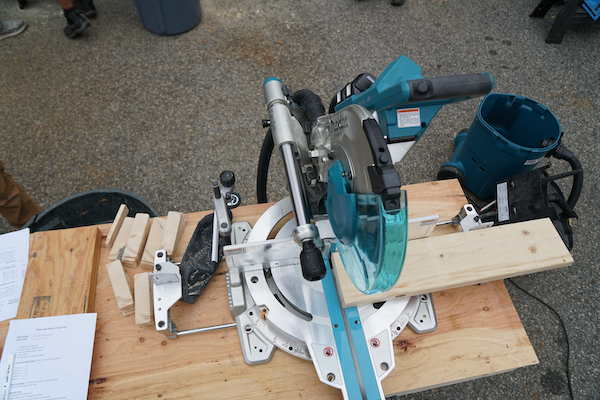
Dust Collection – Winner –Bosch and Milwaukee
| Saw Dust | Oz. | Rank |
| Milwaukee | 8.7 | 1 |
| Bosch | 8.7 | 1 |
| Makita | 7.8 | 2 |
| DEWALT | 6.5 | 3 |
First, we conducted a dust collection test. From carpenters working in finished spaces, to shop workers who want to reduce the amount of airborne dust in their environment, knowing how well a saw will integrate with a vacuum is an important measure of performance for any user.
We made 25 cuts on a 2×6 piece of KD lumber and measured the volume of wood dust that was collected by the vacuum. Additionally, we assessed the buildup of dust that didn’t make it into the vacuum but accumulated on the table and fence of the tool. The result of the dust collection test are depicted in the table below:
Bosch and Milwaukee easily took first place by capturing 8.7-ounces of sawdust compared to the second-place Makita at 7.8-ounce. One note on the Bosch, when the saw head is positioned in the left bevel setting, the sawdust exhaust tubing hits the fence.
The DEWALT saw came in last due to the fact that it performed poorly on dust collection. The reason for this was that the dust chutes rubber flaps [behind the saw blade] collapsed when the dust extractor was turned on. Additionally, when not connected to a vacuum, the long plastic sawdust chute frequently clogged and required a long metal rod [we used an SDS drill bit] to clear it.
Decibels – Winner Makita
| Noise Readings | dB | Rank |
| Makita | 88.2 | 1 |
| DEWALT | 88.7 | 2 |
| Bosch | 96.7 | 3 |
| Milwaukee | 98.7 | 4 |
OSHA allows 8 hours of exposure for up to 90 dB, for exposures 95dB and greater, the exposure limits drop dramatically. So clearly these saws all need hearing protection. Note that we tested these saws in a no-load capacity, under load the saws are louder.
The quietest saw was the Makita at 88.2 decibels followed by the DEWALT at 88.7 decibels and the Bosch at 96.7 and Milwaukee at 98.7.
Pricing – DEWALT
Below we’ve included the current pricing (at the time of publishing this article). Pricing includes kit prices. The best-priced miter saw was DEWALT at $799 followed by Milwaukee at $849 and Bosch at $899 (this is a suggested retail price as it’s not available yet), and $1,059 for Makita.
| Kit Price | $$$ | Rank |
| DEWALT | $799 | 1 |
| Milwaukee | $849 | 2 |
| Bosch | $899 | 3 |
| Makita | $1,059 | 4 |
Buy Now From Our Sponsored Retailers
Overall Best 12 Inch Cordless Miter Saw- Makita
| OVERALL WINNER | Makita | DEWALT | Milwaukee | Bosch |
| Saw Dust Collection | 2 | 3 | 1 | 1 |
| Decibels | 1 | 2 | 4 | 3 |
| Accuracy/ Precision | 1 | 2 | 4 | 3 |
| LVL Speed Test Time | 1 | 3 | 2 | 4 |
| Run-Time # Cuts | 3 | 2 | 4 | 1 |
| Features | 1 | 3 | 2 | 4 |
| Ergonomics | 2 | 3 | 1 | 4 |
| Price | 4 | 1 | 2 | 3 |
| Total | 15 | 19 | 20 | 23 |
| Ranking | 1 | 2 | 3 | 4 |
The Best 12-inch miter saw winner was Makita followed by DEWALT. The Makita saw came in at 15 points and is a high quality, well-built, feature-rich, precise, and accurate cutting saw with the lowest decibels. This saw is nice enough for a woodworker in the shop or a finish carpenter in the field.
DEWALT came in second place with a total score of 19. Being the cheapest saw in the competition and strong rankings in decibels, accuracy/precision, and run-time this is a solid full-size cordless miter saw.
The Milwaukee saw came third place with 20 points. This is the saw that the team said they were MOST LIKELY to choose for field operations due to its performance, dust collection, and ergonomics: most importantly the ease of transport and lighter weight.
Bosch came in fourth with 23 points excelling in quality of build, compact size, and dust collection.
The Bosch, with its excellent dust collection, upfront controls, and axial glide design makes this saw a perfect saw for the shop or on the job site where 12″ cut capacity is key but space is limited. It should also be mentioned that the user interface was a favorite among the team. This is also the only saw in the test with variable speed, making it the best saw for cutting a wider range of materials.
Best Value – DEWALT
The best-valued miter saw was DEWALT. The saw is the lowest price and finished in second place in our testing making it an absolute no-brainer choice for Best Value.
The MOST Comprehensive Information Available
Our ALL Pro contractor team put some serious time and effort into our Best 12 Inch Cordless Miter Saw Head-to-Head evaluation to bring you the most comprehensive information available.
These tests and evaluations are very difficult, take a lot of time, and ultimately limited in scope as we’re not a professional testing company and we’ve got limited time to evaluate the tools. We cannot do long-term testing that would shed light on durability and we can’t possibly test every application that you might use one of these saws for.
We get lots of comments about how we make the final rankings. As we’ve stated, there are hundreds of ways to compare tools. The good news is we’ve openly shared ALL the data from our tests, and you can rank the tools however you want. Don’t care about an item we ranked? No problem. Simply remove that from the matrix above and re-rank them. Hopefully, you’ll find this 12 Inch Cordless Miter Saw Head-To-Head useful when comparing 12-inch cordless miter saws.
If you have a moment, please check out our other Head-to-Head Tests.
Best 12 Inch Cordless Miter Saw Tool Review
About the author
11 Comments
Leave a comment
Disclosure
Product reviews on this site contain our opinion of a product or service. We will always strive for objectivity and transparency in our reviews. Our goal is to provide readers with honest, objective information based on our own experiences. We never have and never will accept payment in exchange for a positive review. Many of the products that we review are provided to us for free by a manufacturer or retailer. In some cases, we also have advertising or affiliate relationships with manufacturers and retailers of products and services we review. For additional information please visit our additional disclosure policies.











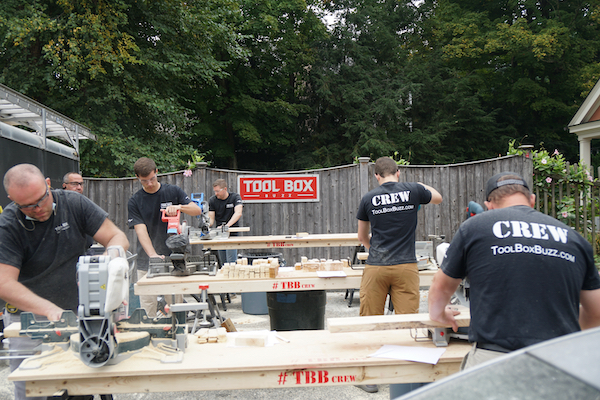
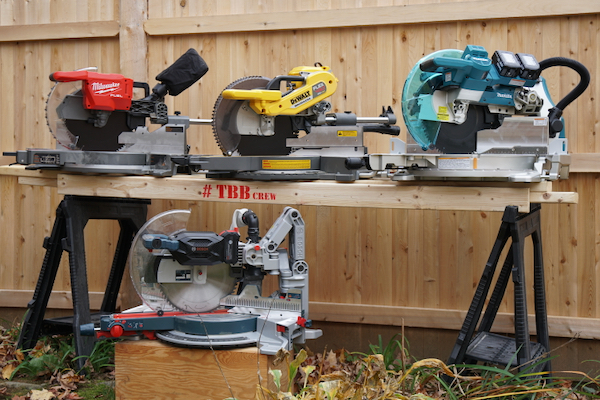
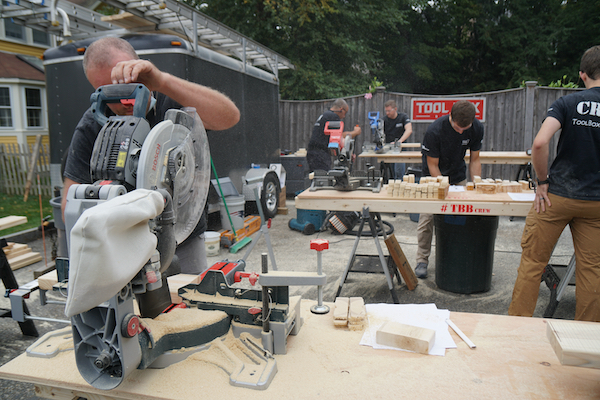
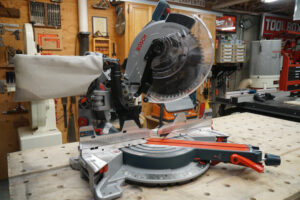
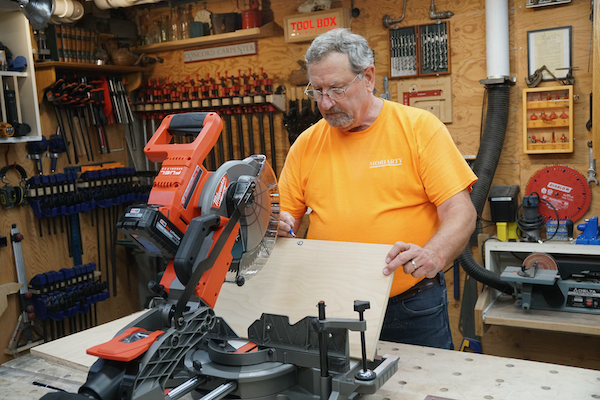
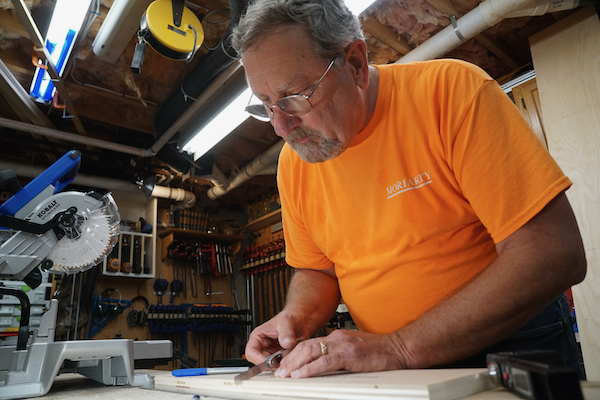
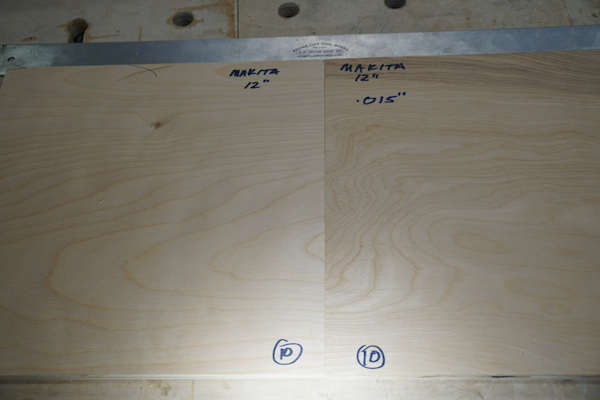
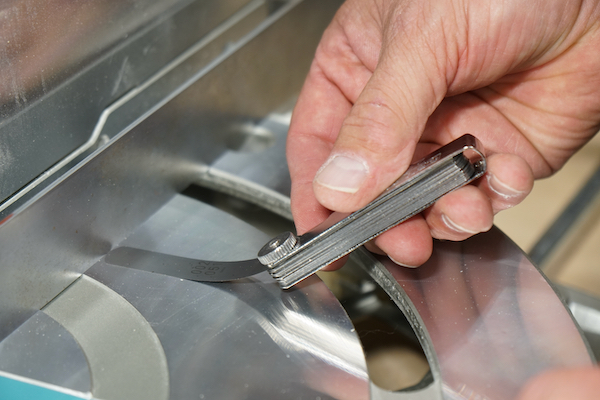
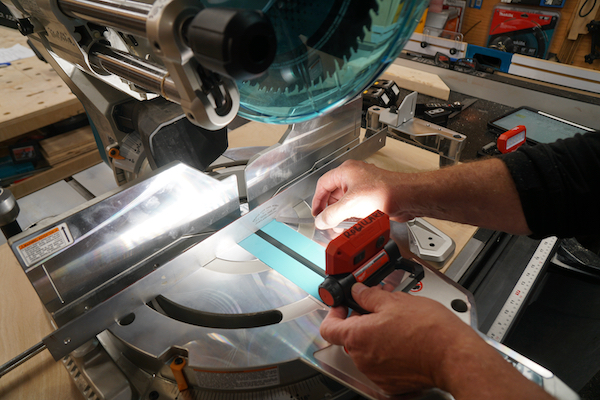
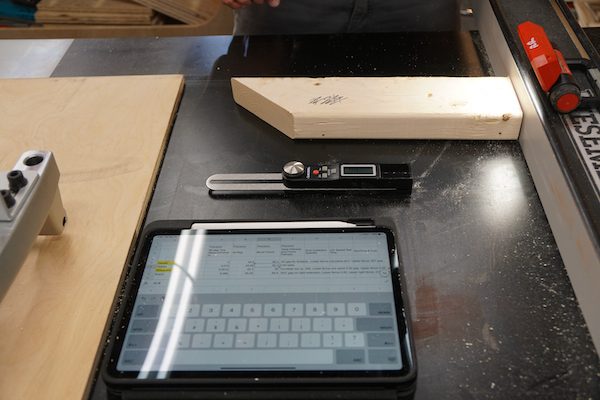
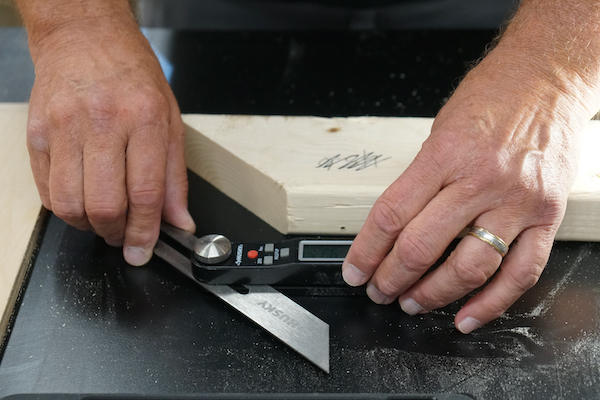
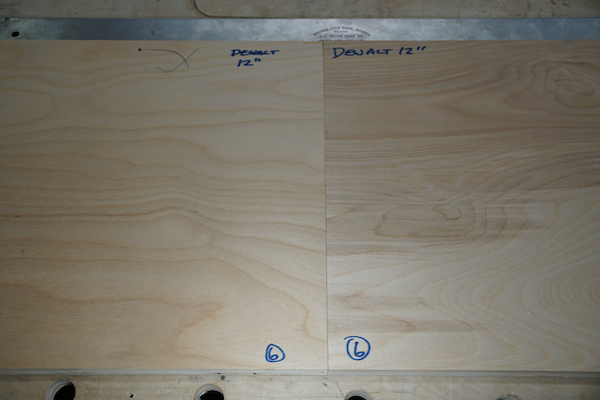
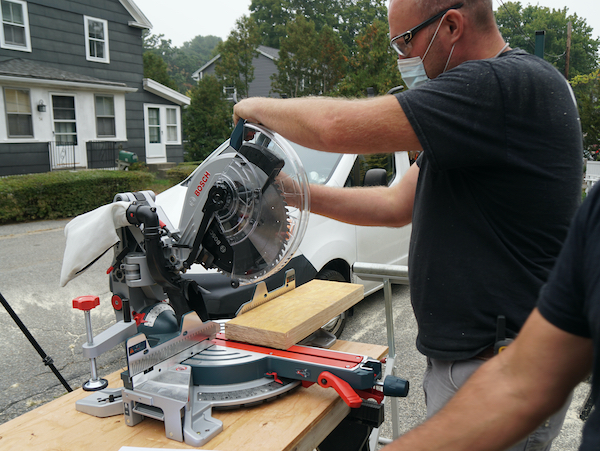
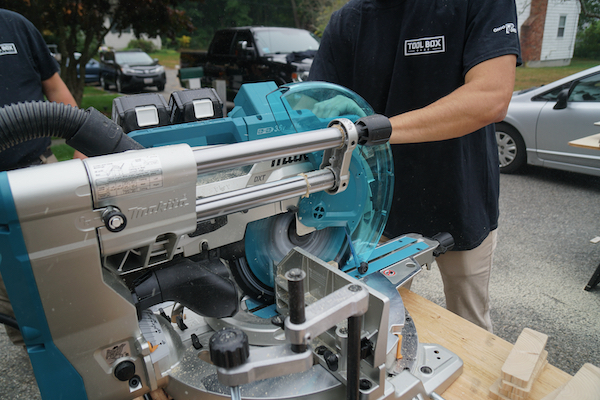
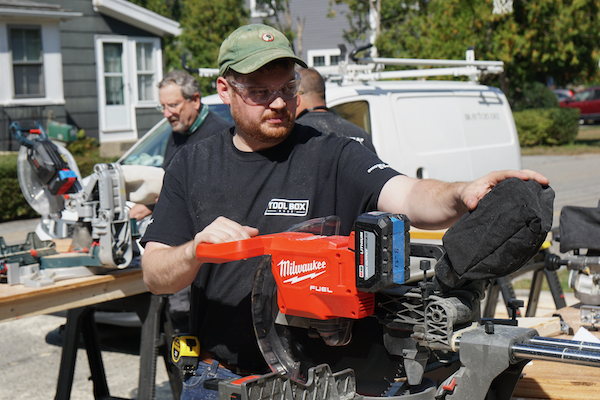
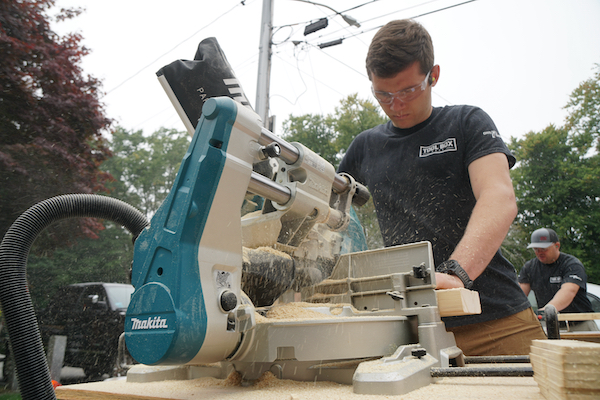
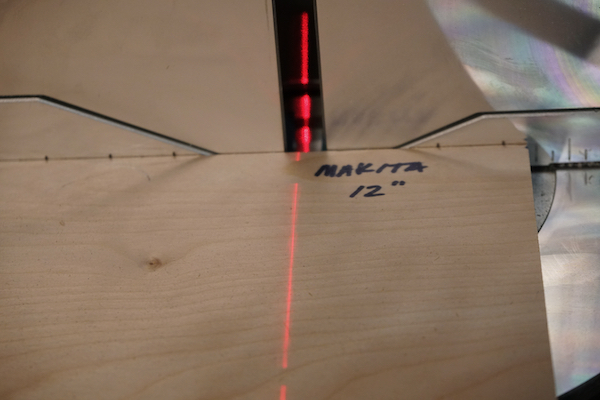
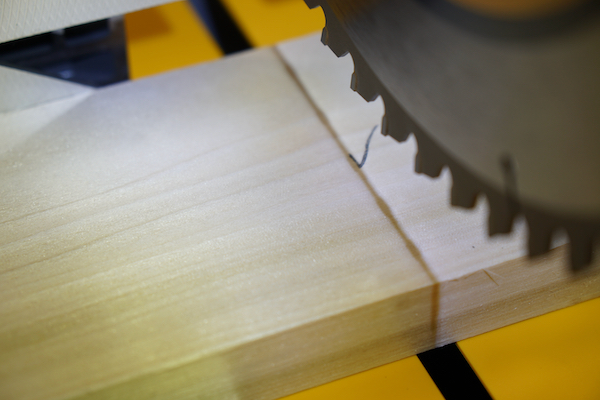
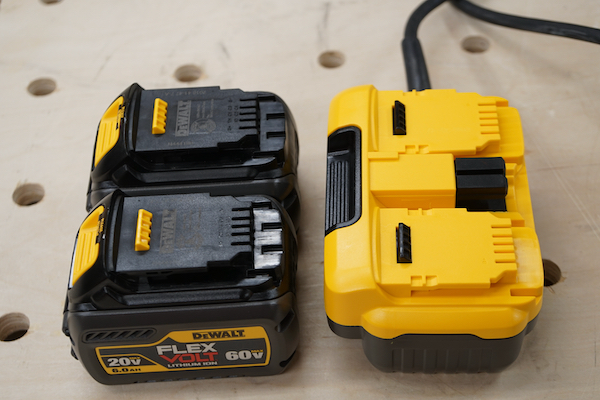
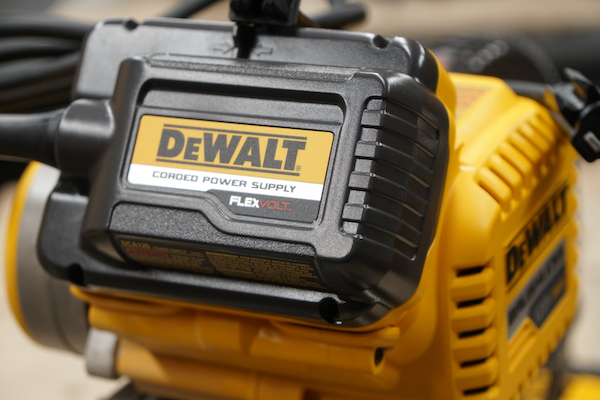
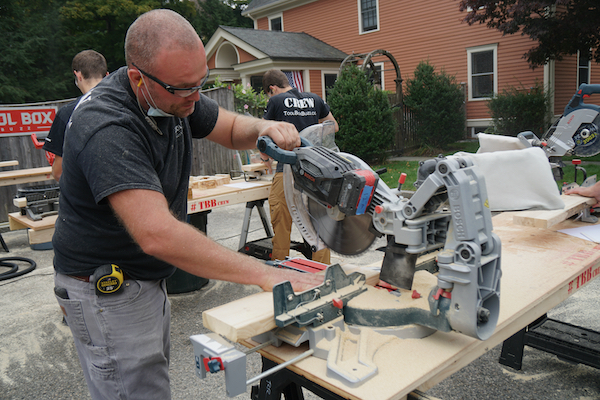
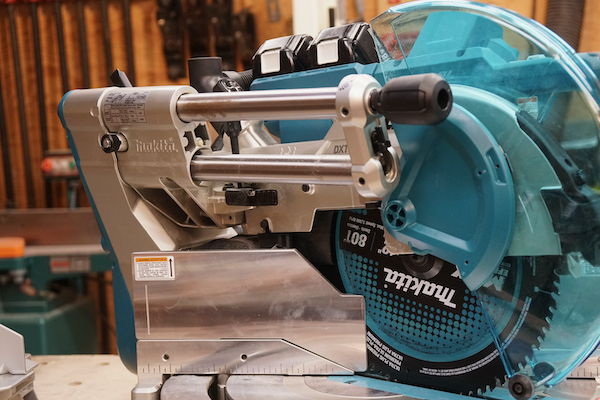
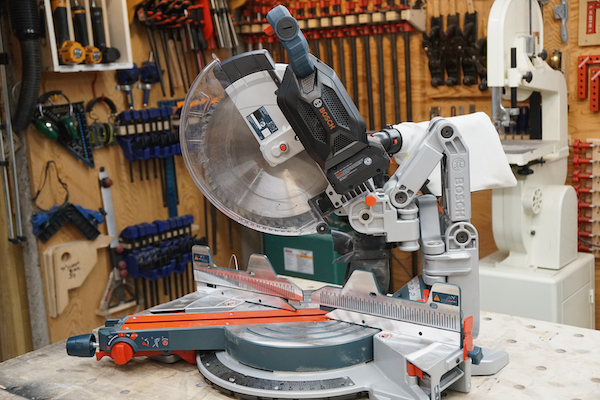
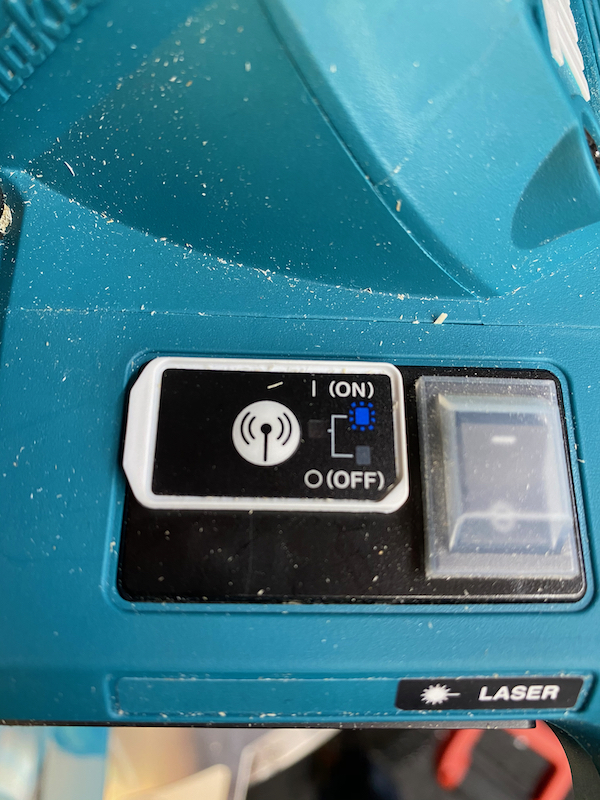
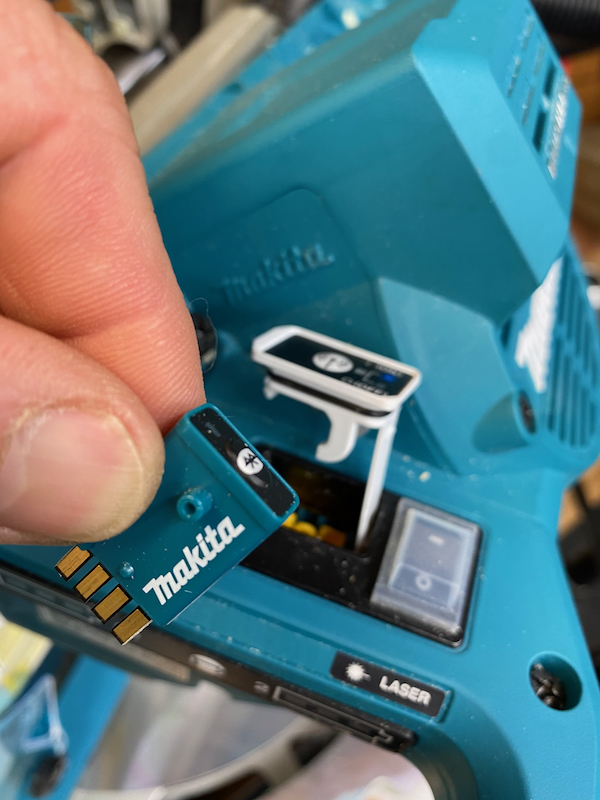

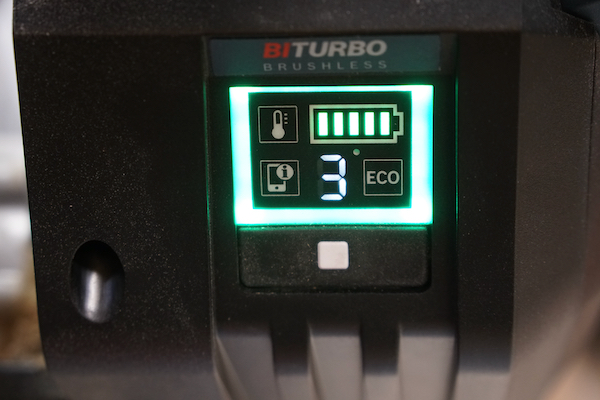
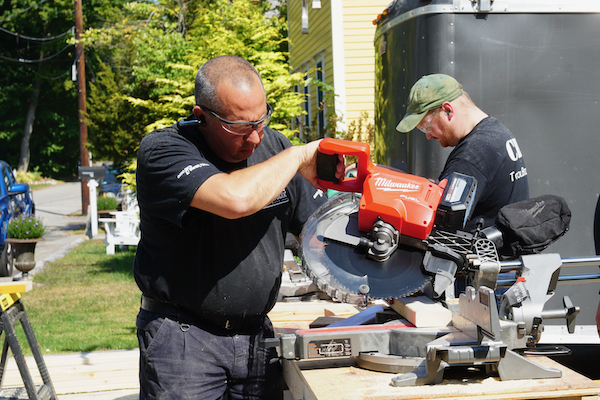
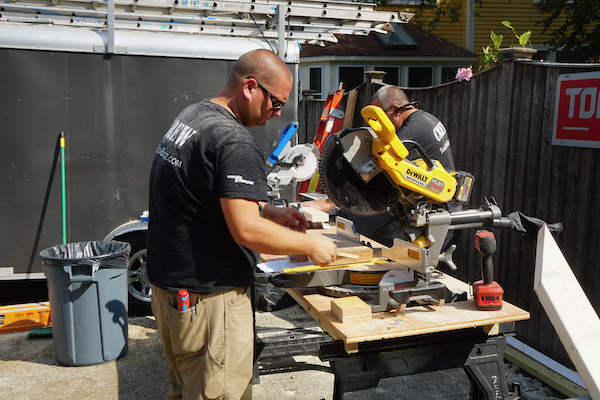
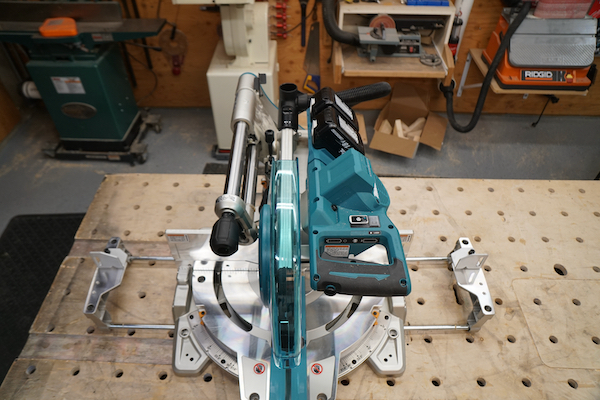
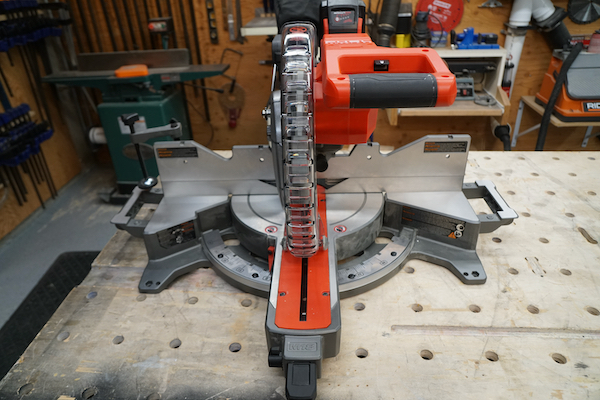
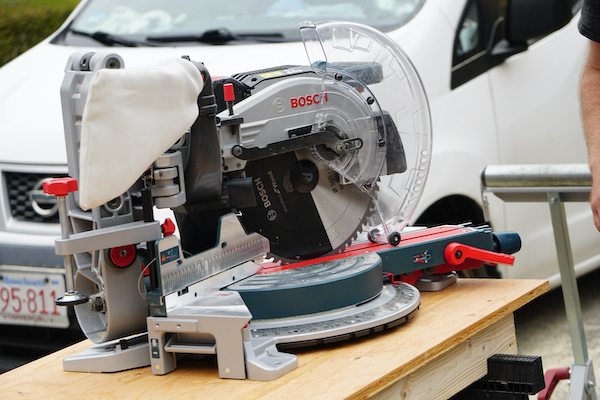
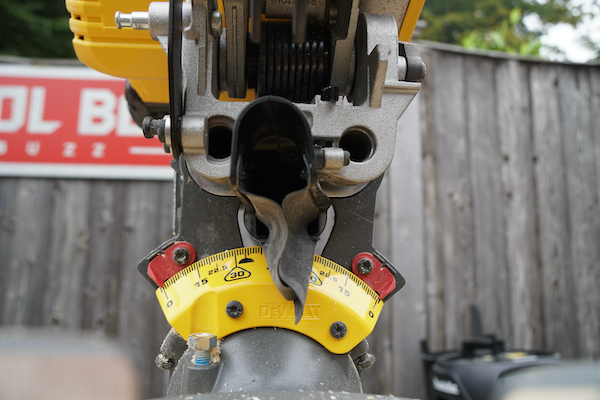
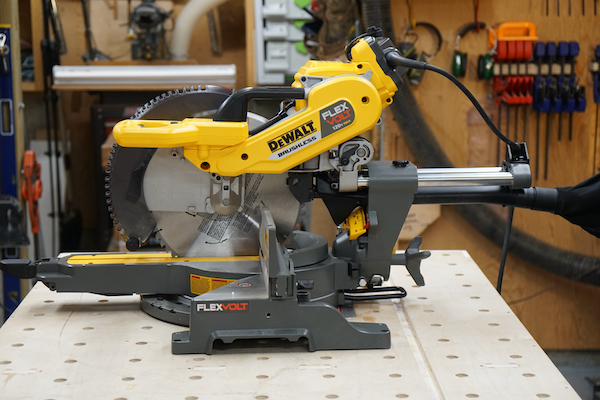
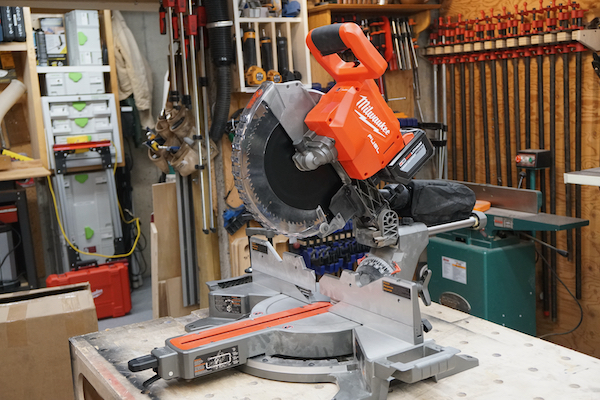
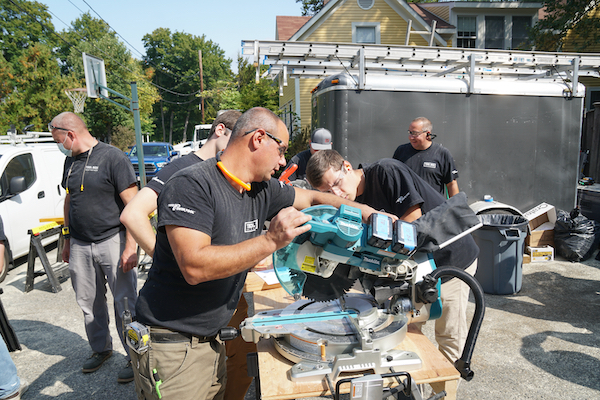
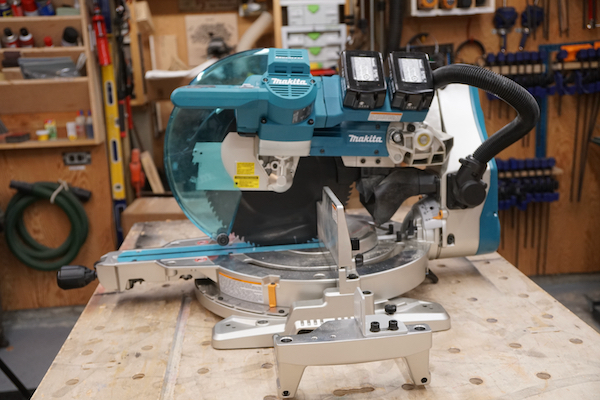
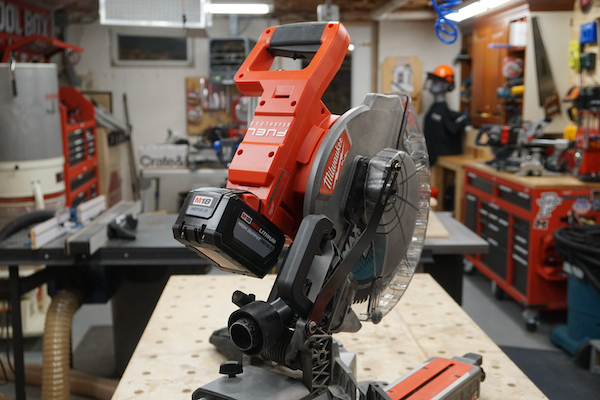
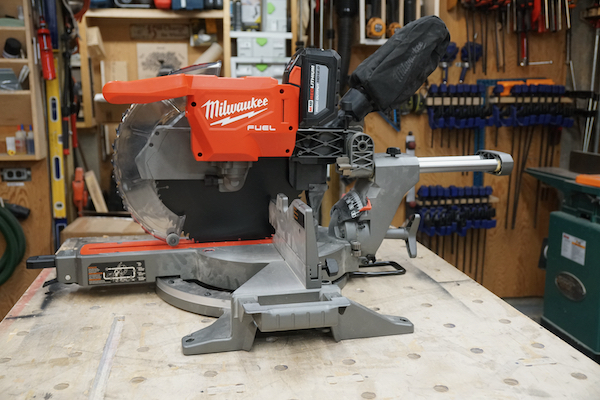
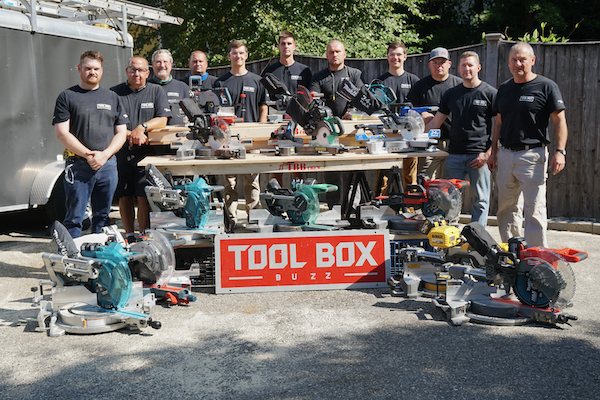
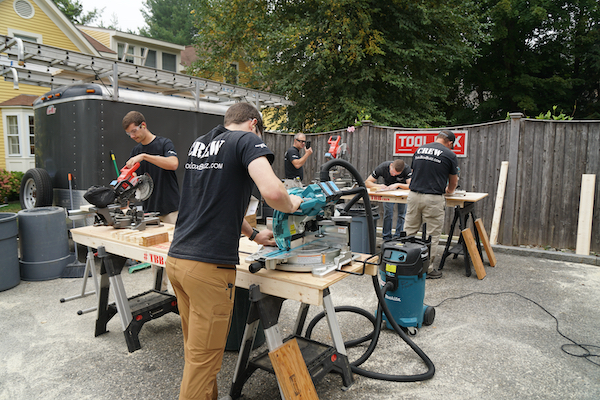












I’m surprised the team would prefer the Milwaukee saw on site despite its frequent power shut offs. Can you speak to the trade off? Thanks as always team TBB I love your tests they are always respectable
Shawn – The shut off situation is a bit rare in the sense that we were constantly cutting, and the team felt it wasn’t as representative as a normal work process for any of us. We felt that under normal conditions the saw would have a lot more resting periods and therefore not go into shut down mode. Several of us run this saw and don’t see that happen during a normal day.
I love the last paragraph. Nonetheless I think most people respect the time and effort y’all put in. But a little constructive criticism is always good. So here goes.
1. I think you should expand the accuracy section. Out of the box is cool but it only tells part of the story. I have never bought a new miter saw that was out of the box good enough for fine finish, framing yes. You should expand this category to which saws are 1 easiest to true up. 2 which are the most true once tuned. 3. Finally retest at end of test to see if they stayed true. 4 testing blade parallel to slides is a must.
The Dewalt and Makita can cut at least 3/4” x 6 3/4” vetrtical against the fence at 90 and at both left or right 45’s. Bosch ? Milwaukee ? It’s an important advantage for a 12” saw
Dust collection. Should be measured with vacuum and bag. And with nothing. With vacuum should carry more weight as that’s when it’s more important.
The whole watt hours per cut is a little to geeky. Battery life should be how many cuts with the batteries it comes and how fast the batteries charge back ie once batteries are done do they charge up before second set runs out.
Special emphasis on actual saws flaws. Such as Makita’s rails are often twisted. This is widely known and there is a fix. Also Makita detente plate is aluminum and wears quickly. There is an aftermarket fix.
Dewalt has only ball bearings in one slide and adjustable bushing in the other. This is why it never slides as smooth as the other saws and one tends to leave a little play in this mechanism.
I have yet to see the Milwaukee
The Bosch is not released nor is the upcoming 12 amp battery. So a revisit with the 12 amp battery is necessary to revisit the power as the Bosch claim 2000 watts but the 8 amp battery peaks at 1440 watts.
Bengt – Thanks for your thought and construction criticism. I’ll give a few responses but as we’ve said many times, we have limited time and limited resources. This is all done with volunteers nights and weekends so we crank out the best we can.
1, 2, 3, 4 – I don’t disagree with your comment. I’d love to spend more time on this topic, it’s just a time management situation. We feel pretty strongly that what you get out of the box can be quite telling about the overall experience of the tool. I think when we do one of these with a smaller tool sample we could do some “after” measurements.
5 – Good catch…we may have that data i’ll have to look and update if we do. Thanks
6 – Dust collection – This is a topic we kick around a lot. The fact is a comparison of the the dust lost without a vac is very indicative of the performance with a vac. It’s a geometry issue with the blade/shroud in almost every case.
7 – We’ll agree to disagree. We do this to help guys try and understand that not all batteries are created equal. When you normalize the data you can see which tools use the battery more efficiently. Many tools companies are confusing consumers with voltage claims (MAX), mixed watt-hours on packs (when they use multiple voltages, etc). Some tools don’t come with a kit, so some companies send an extra large battery (hoping to tweak the results I’m sure). So this levels the field. We provide the raw data so guys can see without the correction as well.
8 – Some of these “issues” you point out can’t be evaluated in a short test cycle like we do. We go based on what’s in front of us at the time of the test. These are NOT long term tests, and we simply can’t do that.
9 – I”m sure we’ll look at other Bosch performance with that pack as they release it.
Thanks!
Awesome. I appreciate all the work y’all put in. Thanks for listening. Great work by the way.
Any ever try the Milwauke in like the mid west or deep South to see if the head made a big differance in the run/power off time due to the heat? Be interstation to see how the saw would handle the work load at 30 degrees vs 0 or even -10 degrees.
Anyone ever travel the US using the different saws? if so did outside temp made a differance
Hi guys, need to get a new 12″ miter saw and am heavily invested in Milwaukee battery system. This doesn’t mean I have to stick with them or a battery miter saw though. What I really want to know is how good or bad the head slop is. It is inconvenient to pull out the table saw due to space limitations and want a miter saw that, once tuned, can give me consistently accurate miter cuts. How did the Milwaukee 12″ compare to the Bosch, DeWalt and Makita in this regard?
Renato,
Head deflection is a hard thing to quantify and measure consistently and therefore we didn’t attempt to. It’s definitely a function of stiffness of the arm system but also user control. When then Bosch glide first came out lots of guys were unhappy with head deflection, but it can easily be dealt with simply by how the saw is used, in fact that’s the saw I have in my wood shop and I love it. So I guess what you should do, head over to a box store and try each one, you’ll get a sense of how they compare based on how you use the saw.
Hi,
Something I have noticed with these test is no one ever mentions the nice size of table on the makita.Yes it is a heavy saw , but a lot of times that nice big stable top comes in very handy.I have had the makita LS 1013 which is going back awhile, which had a large platform to cut on also. Now running the 40 volt 12 inch, just my little 2 cents here. Enjoy reading up on stuff from you folks .
Jim – It’s a legit comment! It’s funny, move into a really big, long schedule build, and everyone wants the big table saw and the big stable miter saw…do a quick remodel and the thought of mobilizing all that heavy stuff sucks! Thanks for reading our stuff!
[…] 60V Lithium Ion Weight: 50.9 LBsThe Tool Box Buzz team conducted a head-to-head comparison of the Best 12-inch Cordless Miter Saw in November 2020. During that H2H one of the four miter saws the crew evaluated was the dual 60v […]